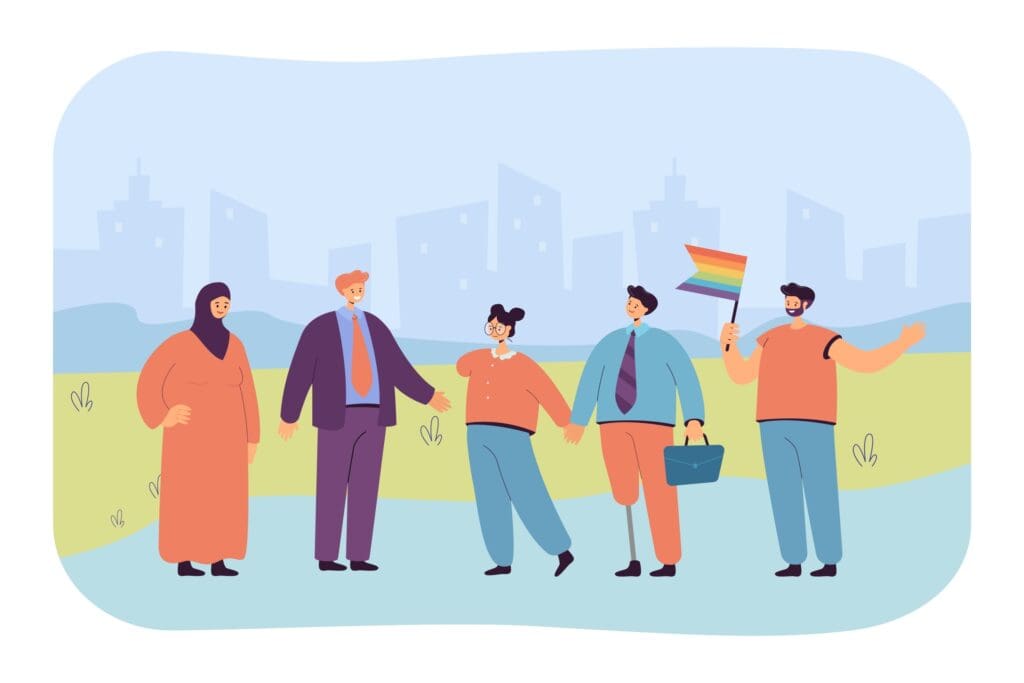New research shows that not all approaches are equitable. Here are strategies to ensure they are.
By Dr. Meisha-ann Martin
Each and every employee, no matter their title, seniority, or tenure at a company, wants to feel like they belong in their workplace. Without that sense of belonging, it’s hard for people to feel psychologically safe, be confident that they are contributing to the success of a company, and, most importantly, feel like they’re included.
Building a sense of belonging and inclusion can be done in a number of ways, but one of the more tried-and-true methods is through holistic, ongoing employee recognition programs. While recognition can be a valuable tool when it comes to building an inclusive organization, many programs are not automatically inclusive. Even though inclusion may be the intent, unconscious bias often creeps in, creating differences in recognition experiences. This can show up in several ways, including:
- differences in frequency of recognition;
- the monetary value associated with recognition; and
- the language used to describe accomplishments.
This creates a fundamental problem for businesses that leverage recognition as a key part of their company culture and operations. A Workhuman iQ analysis of recognition messages from 150 countries around the globe revealed that women receive more awards than men, but they receive less value per award, highlighting a distinct inequality in how men versus women’s work is viewed in the workplace.
The issue of unequal recognition also came up in Workhuman’s recent research, done in conjunction with Gallup, which noted that only 19% of Black employees strongly agree that they receive similar amounts of recognition when compared to teammates with similar performance levels. This reveals, in no uncertain terms, that many Black employees are left out when it comes to recognition. Not only did the research demonstrate that recognition is often unequal in amount, it also uncovered surprising truths about the type of recognition that employees of color often receive. Specifically, Black and Hispanic employees answered that they were recognized more frequently for their personal accomplishments and personality types, but less for performance-related achievements.

Only 19% of Black employees strongly agree that they receive similar amounts of recognition when compared to teammates with similar performance levels.
While recognition in many different forms is beneficial for culture building and productivity gains, it also deserves greater scrutiny due to the potential repercussions that employees might face when receiving recognition for personal and not professional accomplishments. Specifically, it’s vital to note that performance-based recognition is often a driver of career growth, from bonuses to promotions and beyond. Executives almost certainly have visibility into who receives recognition most often, and they rely on this feedback in order to determine who is a top performer within teams. In other words, it stands to reason that organizations that leverage recognition on a daily basis will also use this as a performance measurement tool.
As previously mentioned, this equity gap is by no means intentional, as it often happens without executives and employees realizing it until consequences like disengagement and turnover begin to make themselves known. However, understanding potential biases within performance management and recognition programs can also empower businesses to address them and take concrete actions to build a more inclusive culture for all.
Best Practices for Inclusive Recognition
In order to combat biases within a recognition program, executives and HR leaders should first and foremost audit their existing practices to uncover any equity gaps, such as the ones mentioned above. A thorough audit should include a comparison of frequency of recognition, monetary value associated with recognition, and language to see if there are significant differences between groups. It is also important to consider intersectionality. As an example, Workhuman research shows different results for Black and Hispanic men compared to Black and Hispanic women. In identifying those gaps and differences by group, businesses can then avoid disproportionately poor outcomes for under-recognized groups, namely low engagement, poor well-being, lack of psychological safety, and low perceptions of inclusion.
To prevent this, organizations should strive to give recognition that fulfills the expectations of their employees; connects to company culture; and is authentic, personalized, and equitable. Beyond anchoring their recognition practices in these key characteristics, businesses should also ensure that each and every employee receives recognition on an ongoing basis. More frequent, ongoing recognition helps each employee understand where they are excelling, especially in comparison to more traditional performance reviews that only occur on a quarterly or semi-annual basis.

Women receive more awards than men, but they receive less value per award.
At its best, recognition can help create thriving, connected workplaces, for all employees rather than a specific subset or group. Workhuman research found that Black employees agreed that if they received good, strategic recognition, they were eight times more likely to agree that their organization cared about their well-being, underscoring recognition’s link to stronger mental health and psychological safety. Black employees were also eight times more likely to agree that they saw a path for growth at their organization if they received ample recognition, compared to just five times more likely for White employees. Proper recognition can also help prevent burnout. When they receive the right amount of recognition, Black and Hispanic employees were 43% and 44% less likely to be burned out, respectively, than those who do not strongly agree; meanwhile, women were 63% less likely to be burned out.
While clear gaps exist in many recognition programs, there are strategies to amend these problems to create a more inclusive and effective approach for all employees, especially those from historically marginalized groups. With a better understanding of what employees of color are experiencing in the workplace, and through greater comprehension of how that impacts their well-being and feelings of inclusion, businesses can create an organization that supports and welcomes all employees, ensuring that no one’s feelings go unseen.
Dr. Meisha-ann Martin is senior director of people analytics at Workhuman.














